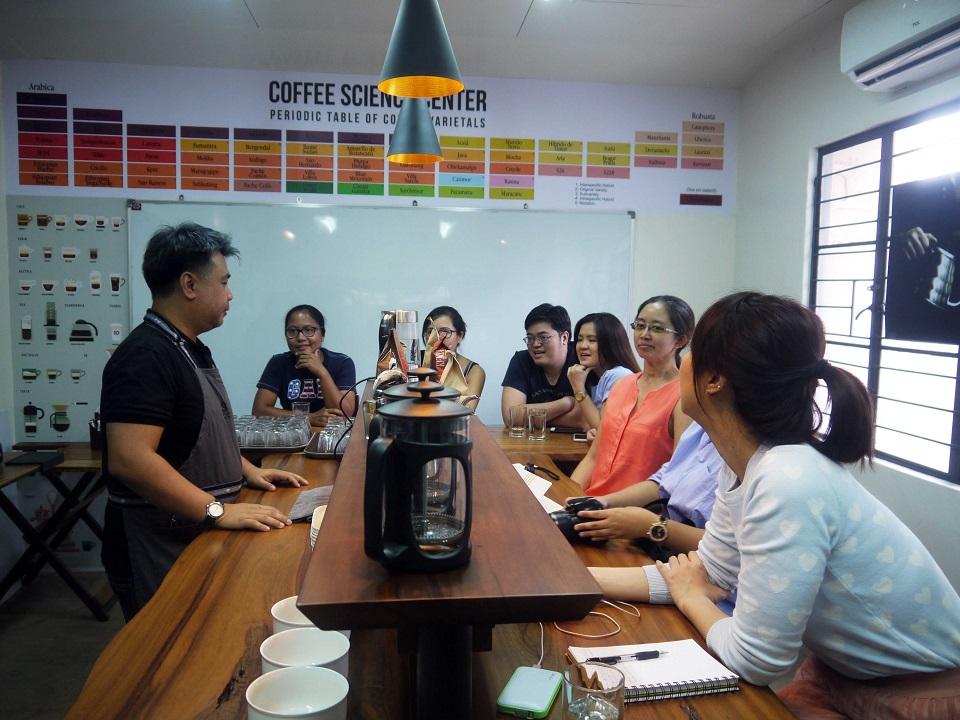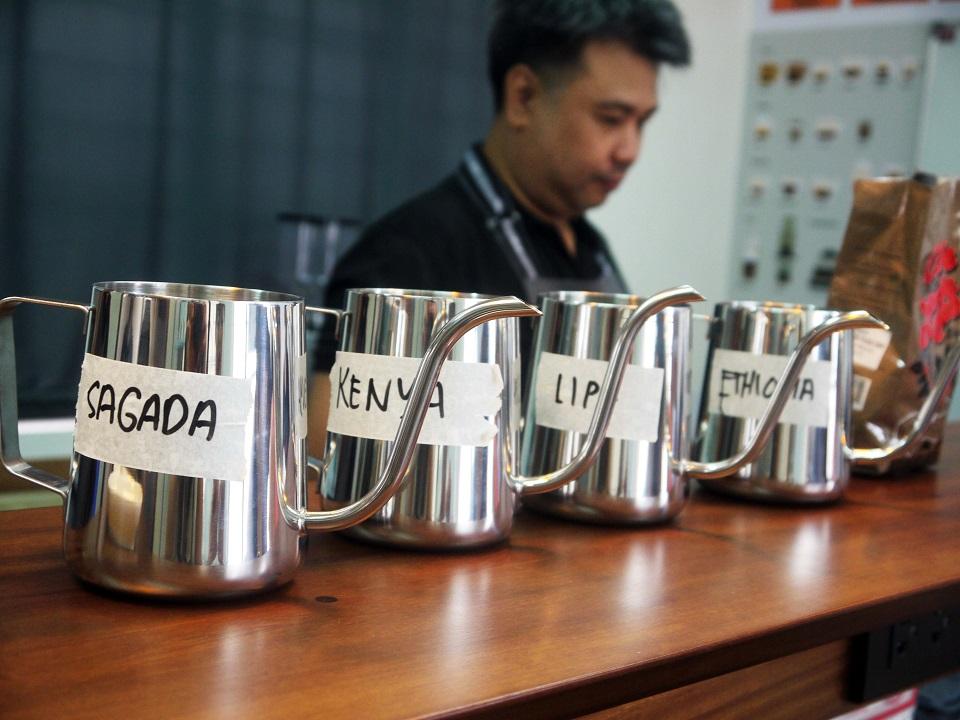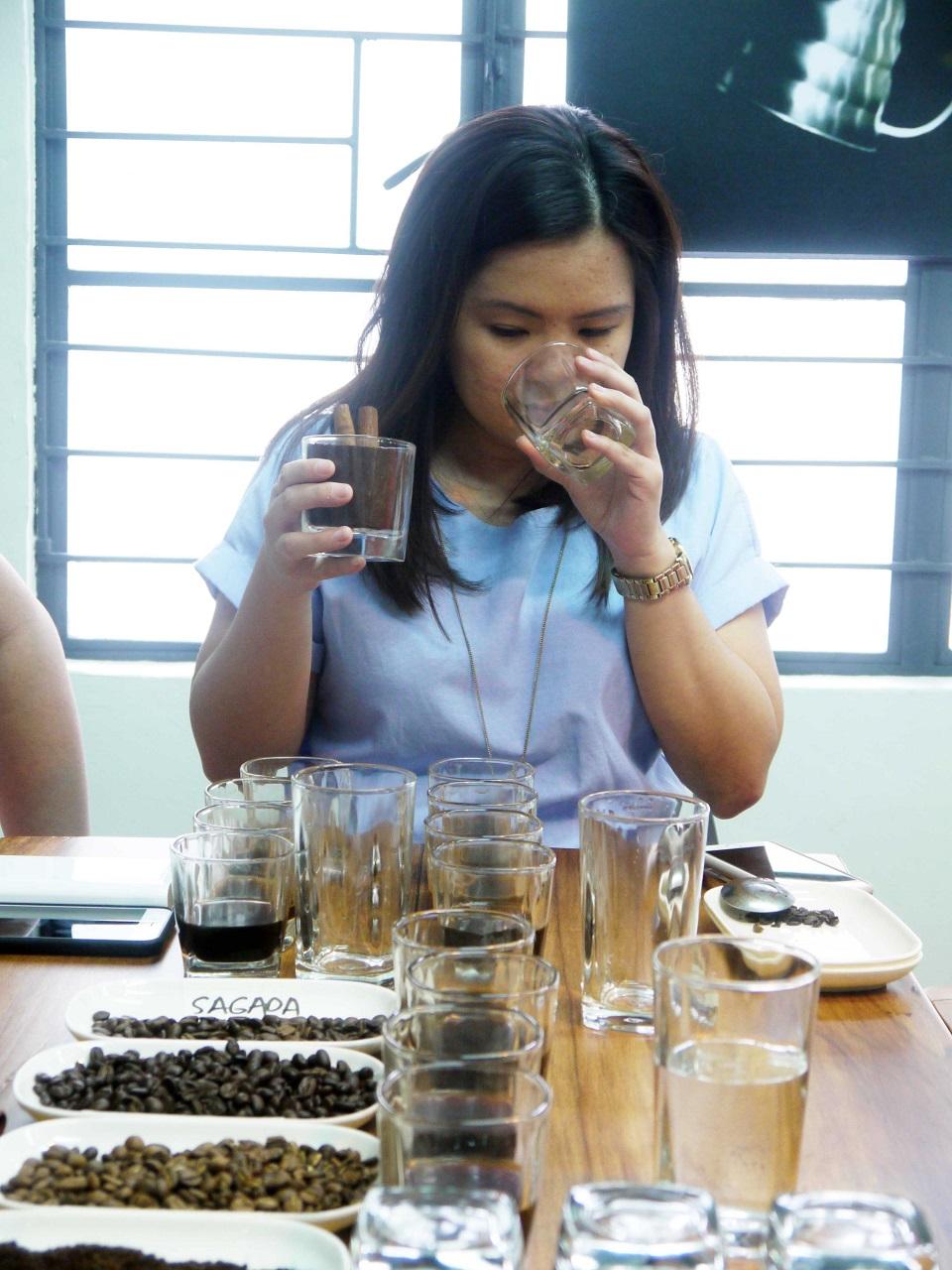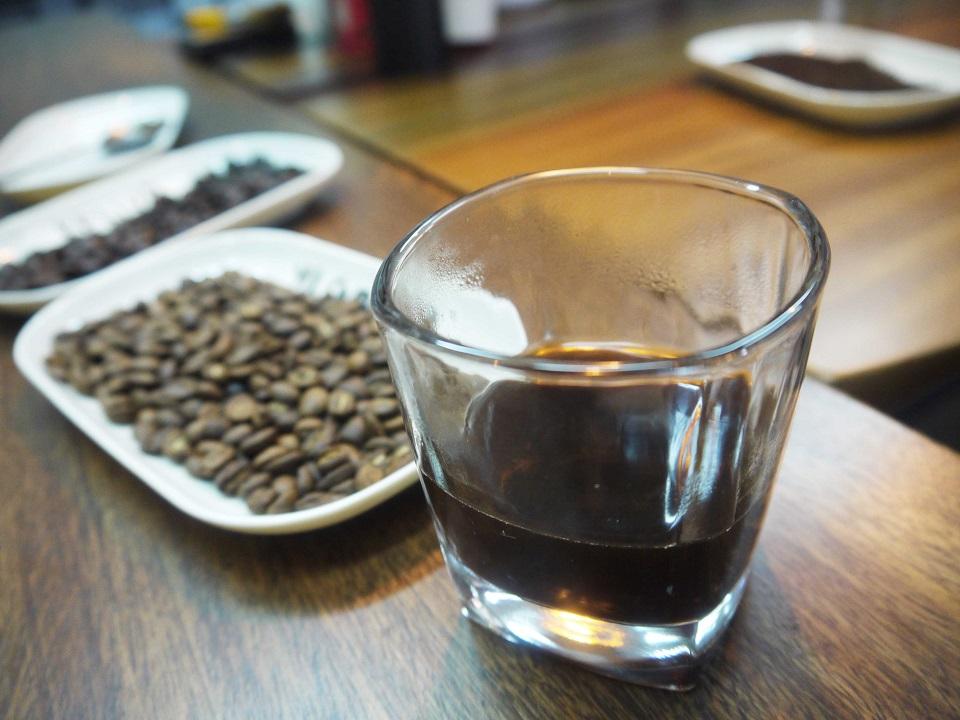I’ve ‘bean’ to Sagada...via a coffee lab in QC

It was a sunny, yet windy Saturday with a chance of coffee. Standing outside the gate of #45 Maalalahanin St., which looked more like my aunt’s house, I almost thought I was lost. But upon entering, a stone path led to a beautiful café with a high ceiling, natural light and with windows overlooking greenery.
“We wanted the space to feel like you’re in Sagada,” explained Zoey, one of the partner baristas, as he pointed out some interesting details, like the counter tabletop that was scavenged from a Navotas pier. And taking these all in, I had to agree. Sagada, after all, is one of the most stunning places in the Philippines I’ve ever been.
Named after the town in Mountain Province in northern Luzon, Sagada Coffee (abbreviated as SGD Coffee) is the fruit of the owners' seven years of hard work immersing in the culture, collaborating with the coffee farmers of Sagada and teaching them how to plant and process coffee beans better.
“Coffee is shrinking in production. Coffee farms are being sold to be transformed into resorts,” SGD Coffee founder and coffee specialist Rich Watanabe said. He started the private initiative “Coffee Heritage Project” in 2009 with the aim of preserving the heritage of organic coffee passed on from one generation to another.
“We created a sustainable system for farmers to maintain and conserve coffee farms,” Watanabe said. The result is quality coffee beans that the café uses today.
Having tried Sagada coffee before and being impressed by it (back in 2011), I wondered why this is the only time I've encountered Sagada coffee since, after so many years of being a hopeless devotee of the “bigger” coffee chains. I soon found answers as Watanabe led me and other workshop participants upstairs to the coffee science center.

Coffee geeks unite
The coffee science center is SGD Coffee’s workshop counterpart. It is made up of two rooms: a tasting room, which is still being finished but is envisioned to be a cupping room, and a coffee laboratory, which is every coffee geek’s dream come true.
Furnished like a laboratory, the room had its own periodic table of coffee origins, a display of coffee paraphernalia—which at first glance could be mistaken for test tubes and beakers—and rows of glass containers filled with coffee beans of different sizes and colors displayed like specimen.
But the truth is, studying coffee is far from those sleepy science experiments in high school (apologies to those who excelled in science; I just happened to suck at it). Instead, it was a session that taught us to question the beans and sip intelligently.
Reading the beans
The best thing about the workshop was being able to understand what makes bad coffee and what makes good coffee. I had several experiences in the past, wherein I ask for black coffee in a restaurant or in a hotel, only to end up not having coffee anymore. I just knew the coffee tasted “blah”, but did not know why it tasted bad.
Coffee is best judged by the beans. We took several samples from different coffee bags, originating from different countries (Kenya, Ethiopia and two from our country), sorted through them and noted each one’s consistency in terms of color and texture.

I was surprised to find out that some of the coffee beans we purchase from groceries have empty shells. And if you buy the ground ones, you have no way of knowing if the coffee company sorted through your beans well. We also observed how each sample sounds when poured onto a plate. Each sample had a different sound, which is also indicative of the quality of the beans.
After manually grinding the beans and French-pressing, now came the part I was looking forward to: drinking coffee! Sample after sample, all of us learned to aerate as we sipped, use our taste buds, as well as dig into our taste memories (some classmates said soap and coins, good luck if they really did taste these objects in the past!), drink water to clear our noses and tongues, then sip again. Sip after sip, we began to learn how to discern the quality of each coffee origin and roast.
As Watanabe explained, there is no one correct taste. What can be sweet to some can be bitter to one.
“How you perceive taste is relative, we all have different levels of sensory sensitivity,” he said, but was quick to add that sensory sensitivity can be trained. Some people are born with it as a gift, but with practice, it can be developed.

Coffee sense and sensibilities
As taste can be trained, and the quality of Philippine coffee can be raised, then how come the Philippines still lags behind its neighboring countries, which are top coffee producers?
Why is there still a lingering perception that our coffee is inferior to the beans that top coffee chains here use? There are consumers who do prefer Philippine coffee, but fail to find proudly Filipino cafes near where they work or live, at their convenience—and, tragically, rumor has it that one of the well-known Filipino coffee shops had been sold to a foreigner due to bankruptcy. Is it just that we don’t care?
Is it possible that chugging huge amounts of coffee from a shop that sounds like Star-sucks numbs not only the taste, but also the nationalism in us?

The supposedly three-hour workshop extended into four as the participants brewed opinions back and forth on the state of Philippine coffee. It was not so much as finding exact answers but the conversation it sparked.
“In Benguet, coffee farmers have turned into full-time tour guides. Coffee farming just didn’t put food on the table.”
“Coffee farmers are among the most oppressed in the world.”
“A genome seedling is being developed by this bully coffee multinational who likes using a red mug; this genome seedling will destroy nature because it’s an abnormality.”
All of these can lead to several stories, but let me stick to this one for now.
As SGD Coffee and Coffee Science Center raises the quality of Sagada beans and promotes coffee education, this counts for an added chapter in the Philippine coffee story, which, hopefully, hasn’t met its ending yet.
The efforts of elevating Philippine coffee may have begun ten years ago, but like beans being poured, tinkling on a plate, these were not dense enough. We really have to make a louder noise, and everyone’s got to work together. — BM, GMA News
SGD Coffee and Coffee Science Center is at #45 Maalalahanin St., Teachers Village, Quezon City.




